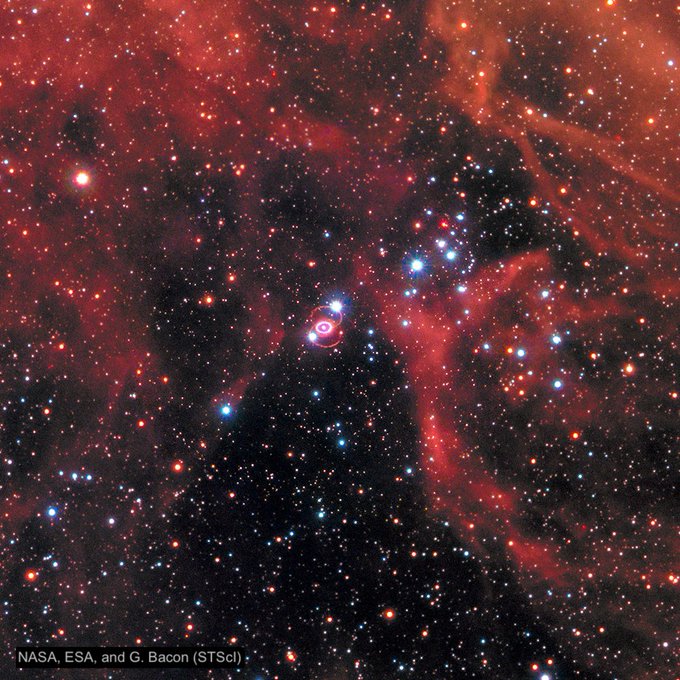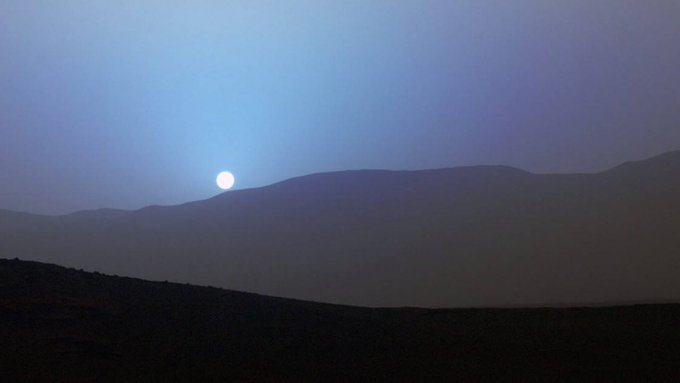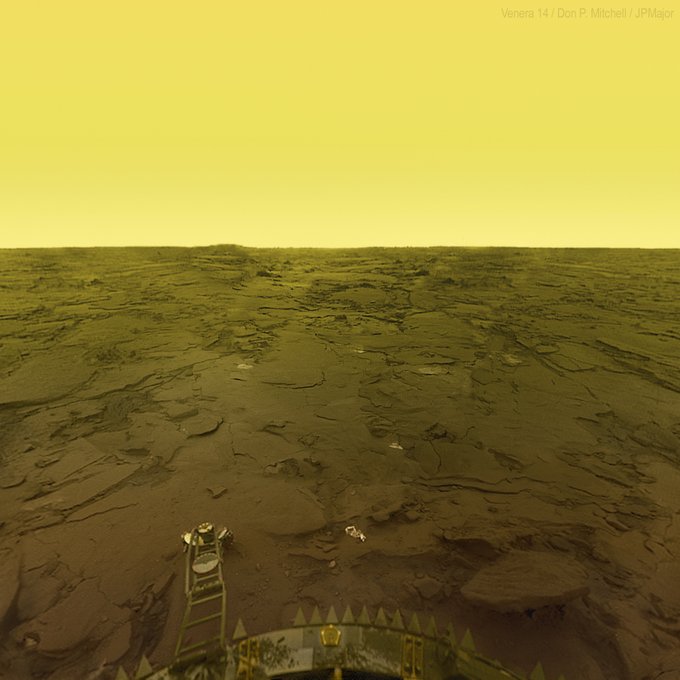Mind-Blowing Facts About Space

August 21, 2024
•18 min read
Space is a fascinating topic. Let's find out about some amazing space facts!
Less than 100 miles above our heads lies an unending universe which is vaster than we could ever comprehend. But it’s far from empty. Instead, it’s filled with incredible phenomena that our puny brains can barely grasp! Can you fathom the existence of things like stars within stars, planets made of diamonds, atom sized black holes, or even white holes? Before you space out, let me bring you back to Earth with some intel about the great, starry expanse that’ll really blow your mind.
The Earth Isn’t Round
You’ve probably seen photos of Earth taken from space, showing that our planet is undeniably round. But looks can be deceiving because that big blue marble isn’t a perfect sphere. And before all the flat-Earthers chime in, it isn’t a pancake either!
As the planet spins, it creates a centrifugal force that’s highest at the equator and almost nothing at its poles. Because the Earth’s mass is distributed unevenly within it, the force drags the equatorial section of the Earth outwards. That gives the Earth a slightly squashed appearance almost like someone accidentally sat on it! The effect, however, is small.So small, that if you compared the diameter of Earth at the poles to the equator, you’d only see a 0.3% bigger, latitudinal bulge. Even so, that’s still a 26 mile hump, which is more than double the distance from the top of Mount Everest to the deepest part of the Mariana Trench!
The Sun Isn’t Burning
If any of you have been outside recently, you’ve probably felt the warm rays of the sun shining on your face. But despite the undeniable heat it gives out, the Sun, a giant ball of hot gas isn’t actually burning up. That’s because the term "burning" refers to a chemical reaction involving the rearrangement of electrons in an atom. So, the element itself does not change, but the arrangement of its electrons does.
However, our sun, which is composed primarily of hydrogen and helium gases, uses a process called nuclear fusion. That means instead of atoms being re-arranged, the very nature of the element changes. Instead of burning the hydrogen, the sun converts gargantuan quantities of it into helium and energy.
The Heaviest Thing In The Solar System
Even though it’s converting more and more of its finite fuel source into energy, the sun is still the heaviest thing in our solar system. And not by any small amount! It holds a whopping 99.85% of the solar systems entire mass. In comparison, all 8 planets combined make up a measly 0.135%!

R136a1: The Heaviest Star In The Universe
Our sun may be incredibly heavy, but if it was preparing for a physical fight against the other stars in our universe, it’d be dumped in the lightweight category! Across the ring, sat at the top of the super heavy weight roster would be the colossal, yet uninspiringly named, R136a1.
UY Scuti: The Biggest Star In The Universe
R136a1 may be incredibly heavy, but it’s actually quite small; with a diameter just 35 times bigger than our sun, it’s more like the Michelle to the universe’s Beyoncé! And while Beyoncé may be the biggest star in the world, UY Scuti is the biggest star known to man! It’s so mind-glowingly large that when compared to our sun on a computer screen it barely takes up one pixel.
But if it’s so big, how come we’re not being constantly blinded by it? Fortunately for our eyes, it’s situated in the Milky Way galaxy’s Scutum constellation, around 5,219 light years from Earth. But even though it’s so far away, its incredible size makes it stand out from the small cluster of stars it’s surrounded by. That’s because UY Scuti tops out the tape measure with a radius that’s a staggering 1,700 times larger than that of our sun’s. That gives it a diameter of almost 1.47 billion miles across! So, even if you were to travel at rocket speed which is a breakneck 4.9 miles a second, it would still take you almost a decade to pass through! Or if you prefer land vehicles a non-stop, 50 mph road trip would see you reach the other side in an inconceivable 3371 years!Planet Nine
If you were to travel beyond all the known planets in our solar system, you’d come to a cold, dark point in space known as the Kuiper belt. Unlike the neat, circular orbits of our planets, large objects in the Kuiper belt have trajectories that seem a little lopsided at best!
While they all still orbit the sun, you can see the most distant objects all swing out awkwardly in one direction. But according to the principles of astrophysics, that unevenness should be for lack of a better word, impossible.How Many Stars Are In The Milky Way?
Counting every single star in the sky sounds like an endless task. But with a little math, it’s not too hard to figure out just how long that astronomical mission would take you. Let’s start at a galaxy level, our own to be precise!
Some calculations indicate our Milky Way galaxy holds between 100 to 400 billion stars. Using that as a jumping off point, next we need to figure out how many galaxies are in the universe. Seeing as we don’t know how big the universe really is, that is a colossal question.
Supernovas
As ethereal as they look, stars don’t last forever. And when they die, they go out with a real bang! Those astronomical explosions are called supernovas. They involve massive stars, at least eight times the mass of our own sun, that consume huge amounts of hydrogen at their cores. The energy that produces generates an intense, outward pressure which prevents the star from collapsing under its own colossal gravity.
But when the star runs out of fuel, gravity finally wins against the pressure, and the star collapses in on itself! It happens so suddenly, that it would be like watching something a million times the mass of Earth collapse in just 15 seconds! As you can see from this NASA animation below, the shockwaves this produces blast apart the outer layer of the doomed star!#OTD in 1987, astronomers spied a bright flash in a neighboring galaxy. The event, called SN 1987A, remains the closest supernova in over 415 years and is one of the best opportunities to study this type of stellar death. More: go.nasa.gov/3GzLlEP
Black Holes
While the remnants of some supernovae look otherworldly, others can leave behind something truly nightmare inducing. If the remaining stellar cores of enormous, exploded stars no longer have the outward force of heat pressure opposing their gravity, then the core collapses in on itself. That impossible sounding occurrence is what we know as a Black Hole.
However, it’s not the same as watching a building collapse. Because as the star caves in on itself, its rapidly reducing surface approaches a point called "The Event Horizon". That is the threshold where the speed needed to escape the gravity of the collapsing star surpasses the speed of light.White Holes
While black holes hog all the limelight, their neglected twin White Holes barely get any airtime at all! That’s right, white holes are, as the name suggests, the theoretical opposites of black holes. As I previously mentioned, black holes have gravitational boundaries that can stop just about anything from escaping.
After some physicists fiddled with the math's back in the 1970’s, they concluded that an opposite entity could exist that prevents anything from entering instead. So, while a black hole gobbles up matter, a white hole spews matter out. It’d be an incredibly bright and energetic object, hurling energy into the depths of space at an astounding rate.
Diamond Rain
In some parts of the world, rain is incredibly precious. But on the outer planets of our system, it’s priceless not because it’s rare, but because it literally rains diamonds! That incredible occurrence starts in the atmospheres of gas giants, like Jupiter, Saturn, Uranus, and Neptune. All four planets have atmospheres that contain high quantities of methane.
During lightning storms, the electrical energy converts the methane into soot, which clumps together and hardens into chunks of graphite. As the chunks get heavier, they’re dragged down by the planet’s gravity and into the ever increasing pressure of its atmosphere.
55 Cancri e: The Diamond Planet
When it comes to planets boasting copious amounts of diamonds, the previously mentioned gas giants can all step aside for 55 Cancri e. After the discovery of the "Super Earth" in the Cancri constellation back in 2004, scientists began analyzing its composition. They estimated that the carbon abundant planet had a mass 8 times greater than Earth, with a radius only twice as wide.
The discrepancy meant that the planet must be made of dense carbon compounds, like graphite and extraordinarily diamond. But it wasn’t just a few necklaces worth. Scientists theorize that a thick layer of pure diamond coats the planet’s inner layers, making up a staggering third of its mass!In fact, if it were to be valued on its diamond content alone, it’d probably be worth approximately $26.9 nonillion, that’s $26.9 followed by 29 zeros! Although it sounds like an ultra wealthy utopia, there’s nothing cool about it! In fact, the temperature of the surface reaches a flesh melting 3,900 degrees Fahrenheit. The inhospitable environment makes that planet an extra terrestrial diamond in the rough!Saturn's Hexagon
At school, you probably learned that the most amazing feature of Saturn was its stunning set of rings. But if you look closer, you’ll see an even more mind blowing side to that planet or 6 to be precise. At the North Pole of that serene looking gas giant, a huge, hexagonal storm is constantly raging.
Aurora Borealis
Like waves of emerald green ribbons, the lights of the Aurora Borealis dance across the nights sky. Even though those delights to the eyes are best seen at night, they’re caused by the sun. The green swathes form when solar winds which are high speed, electrified particles released by the sun, collide with the Earth’s magnetic field. Some of the particles travel down the magnetic field lines into the Earth’s geomagnetic poles.
Thorne Żytkow Theory: Supergiant Stars Swallowing Dead Stars
You’d think the universe was big enough for every star to have plenty of space. But according to the Thorne Żytkow theory, some stars have no personal boundaries. Instead, they exist inside other, larger stars like Russian nesting dolls! As impossible as it looks, there are two main theories that can explain that phenomenon.

Sunset On Other Planets
In 2015, the Curiosity Rover sent back photos of a blue skied sunset on Mars. But during the day those same skies are orange, it’s the exact opposite of Earth! So, how on Earth (well, Mars) does that work?
Here is a photo of the Curiosity rover of a magnificent sunset over #Mars .

The clearest image ever taken of Venus's surface 🔍 Credit: Soviet Venera-14/ @DonaldM38768041 / @JPMajor



















